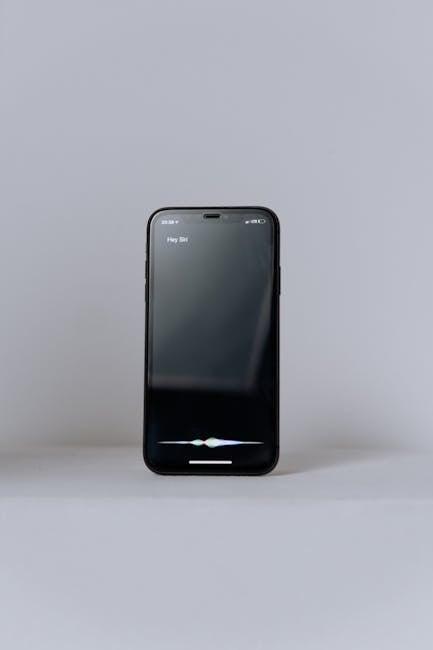In the ever-evolving landscape of mobile technology, photography stands as one of the most transformative frontiers. Gone are the days when snapping a quick photo meant settling for a mere snapshot; today, every image captured on a smartphone is a canvas rich with possibility. At the heart of this revolution lies the subtle yet powerful force of neural networks-artificial intelligence systems that learn, adapt, and enhance with remarkable precision. By seamlessly weaving neural networks into the fabric of mobile photography, devices now transcend traditional limits, offering users not just pictures, but moments refined through intelligent computation. This fusion of hardware and AI heralds a new era where creativity meets cutting-edge technology, reshaping how we see and share the world through our lenses.
The Evolution of Smartphone Cameras through Neural Network Integration

Smartphone cameras have undergone a profound transformation by embracing the capabilities of neural networks, catapulting mobile photography beyond traditional hardware limitations. Earlier, achieving professional-quality images demanded bulky lenses and sensors, but today, smart algorithms analyze scenes in milliseconds, enhancing clarity, color accuracy, and low-light performance. Neural networks excel at solving complex imaging challenges, such as noise reduction and real-time HDR processing, enabling even casual users to capture stunning photos effortlessly. The fusion of AI with optics means phones can now predict and compensate for motion blur, intelligently refocus shots, and simulate bokeh effects previously reserved for expensive DSLRs.
Among the remarkable advancements enabled by neural networks are:
- Scene Recognition: The system identifies various scenarios-sunset, portraits, macro-and tailors settings automatically.
- Super Resolution: Combining multiple frames via AI to produce ultra-detailed pictures.
- Depth Estimation: Creating realistic background separation and 3D photo effects.
- Post-Capture Enhancements: Allowing users to adjust lighting and focus after snapping a picture.
| Year | Key Neural Network Feature | Impact on Photography |
|---|---|---|
| 2016 | Basic Noise Reduction | Clearer low-light images |
| 2018 | AI-Powered HDR | Dynamic lighting balance |
| 2020 | Depth Mapping | Professional bokeh simulation |
| 2023 | Real-Time Scene Optimizer | Instant adaptive settings |
Unlocking Enhanced Image Quality with AI-Driven Processing

Modern mobile cameras leverage neural networks not just to capture images, but to transform raw data into stunning visuals. These AI algorithms analyze scenes at a pixel level, intelligently enhancing colors, contrast, and sharpness in real time. By learning from vast datasets of diverse images, the technology can predict the ideal adjustments, correcting imperfections and balancing exposure even in challenging lighting conditions. This results in photos that are richer, clearer, and more lifelike than ever before-without requiring professional editing skills.
Key advancements include:
- Noise Reduction: Seamlessly removes graininess while preserving fine details.
- Dynamic Range Optimization: Balances shadows and highlights for vibrant yet natural tones.
- Super-Resolution Processing: Enhances image detail beyond the sensor’s native resolution.
- Real-Time Scene Recognition: Tailors image enhancement based on the photo’s content.
| Feature | Benefit | Use Case |
|---|---|---|
| AI Denoising | Clearer night shots | Low-light environments |
| HDR Synthesis | Balanced exposure | Backlit portraits |
| Depth-Aware Editing | Precise background blur | Portrait photography |
| Adaptive Color Grading | Vibrant color palettes | Landscape shots |
Techniques for Optimizing Neural Network Photography Apps

Maximizing the performance of neural network-powered photography apps on mobile devices requires a strategic blend of efficiency and innovation. A key approach involves model pruning, where redundant neural pathways are trimmed to accelerate processing without sacrificing image quality. Paired with this is the use of quantization techniques, which reduce the numerical precision of computations, offering faster execution and lower battery consumption while maintaining visually acceptable results. Developers also leverage knowledge distillation, transferring capabilities from large, high-demand models to smaller, leaner ones optimized for mobile environments.
- Dynamic Resolution Scaling: Adjusts image resolution based on available device resources to balance speed and detail.
- Layer Fusion: Combines multiple neural network operations to streamline data flow and reduce latency.
- On-device Learning: Employs incremental model updates using real user data, enhancing personalization without cloud dependency.
Another vital strategy lies in harnessing hardware acceleration through mobile GPUs and dedicated AI chips, enabling parallel computations that push the boundaries of real-time photo enhancement. Developers also tap into adaptive algorithms that intelligently allocate computational resources based on scene complexity-simplifying tasks like background blur in well-lit settings, while ramping up processing power for more demanding low-light corrections. This synergy of software and hardware optimization empowers users to capture stunning images effortlessly, turning smartphones into powerful creative tools.
Balancing Performance and Battery Life in AI-Powered Mobile Photography

Optimizing the delicate balance between computational power and energy consumption remains a core challenge for developers of AI-driven mobile photography. Neural networks, known for their ability to enhance image quality by performing complex tasks like scene recognition and noise reduction, demand significant processing resources. To address this, many devices now integrate specialized AI chips and leverage dynamic resource management, allowing the camera’s AI to scale its performance based on current battery levels and user needs. This not only ensures stunning photo results but also prevents rapid battery drain during extended shoots or video captures.
Strategies to harmonize performance with battery longevity include:
- Adaptive AI workload distribution that activates only essential neural network components based on the shooting context.
- Hardware acceleration via dedicated AI co-processors designed for low power consumption.
- Efficient algorithm designs that reduce computational complexity without compromising photo quality.
- Real-time monitoring systems that adjust AI intensity depending on remaining battery capacity.
| Method | Impact on Quality | Battery Usage |
|---|---|---|
| Full AI Mode | Highest | High |
| Adaptive Scaling | Optimal | Moderate |
| Basic Enhancement | Good | Low |
Closing Remarks
As the lines between technology and artistry continue to blur, mobile photography powered by neural networks is reshaping the way we capture and perceive the world around us. These intelligent algorithms don’t just enhance images-they redefine creativity itself, making professional-level photography accessible to millions at their fingertips. As neural networks evolve, so too will our ability to tell stories through images, transforming everyday moments into extraordinary visual narratives. In this intersection of innovation and imagination, the future of mobile photography is not only bright-it’s brilliantly neural.











